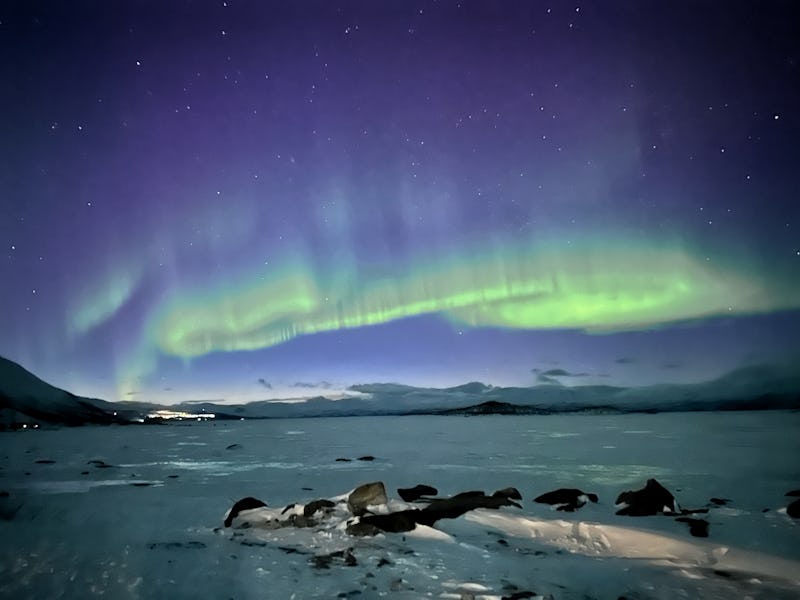Who Will See the Northern Lights This Week? An Astrophysicist Reveals The Best Spots in the U.S.
Residents in 17 states may be able to glimpse the piebald sky, according to predictions from the Geophysical Institute.

Summer storms aren’t necessarily rain, thunder, and lightning. As our sun’s solar storms and winds tickle the Earth’s magnetic field, the northern lights streak color across the sky. According to the Geophysical Institute at the University of Alaska at Fairbanks, the famous phenomenon, also known as the aurora borealis, will be at least partially visible to 17 American states during hours of darkness between Wednesday, July 12, and Thursday, July 13.
One particular type of solar storm, called coronal mass ejections, is prime for creating northern light conditions. Eruptions of plasma spray from the sun and solar wind send airborne electrons hurtling toward Earth’s atmosphere. As these particles make an impact with the gaseous layer and magnetic field, captivating colors explode like homemade fireworks. These electrons excite oxygen and nitrogen particles beyond their resting state, which causes them to shoot out photons as they release energy and settle back to normal. Oxygen flares green and red, and nitrogen emits blue.
While Alaska regularly enjoys the lights show, states further south may finally get their turn. This anomaly occurs because of the solar cycle, an 11-year period during which the sun’s two magnetic poles swap places. We’re approaching the intense end of this cycle, which is why these flares are more visible further south.
Don Hampton, an astrophysicist at the Geophysical Institute, wrote in an email to Inverse that this recent space weather could be a particularly good time to see the aurora borealis. “In terms of viewing [the] aurora, the current solar cycle is showing many more sunspots than earlier predicted, so this promises to be an active period for aurora and space weather.”
What areas of the U.S. will be able to see the northern lights?
Residents in parts of Alaska, Idaho, Indiana, Maine, Maryland, Michigan, Minnesota, Montana, New Hampshire, New York, North Dakota, Oregon, Vermont, Washington, Wisconsin, and Wyoming may be able to glimpse the piebald sky, according to the Geophysical Institute.
However, it's not a guarantee that people living in areas predicted to see the lights will actually be able to see it when the time comes, and that has to do with the way we track solar storms.
Astrophysicist Don Hampton says only a few satellites and instruments collect data on solar wind flow and direction, which dictates where and when the northern lights might crop up. They may accurately measure solar wind as it careens from the sun, but there’s no guarantee it will end up where the models predict.
“While large solar storms can be seen leaving the vicinity of the sun, and their direction and speed can be estimated, once they leave the local solar vicinity, they cannot be tracked,” Hampton says. “During this time, the solar storms can be slightly diverted or even reduced, and the final impact on Earth’s magnetic field may be different than predicted.”
What are the best conditions to see it?
The National Oceanic and Atmospheric Administration’s Space Weather Prediction Center recommends areas free of light pollution as the best viewing spots. It also says that between 10 p.m. and 2 a.m., local time makes for optimal sky-watching.
The Geophysical Institute scales auroral activity with the Kp index or planetary index. This scale ranges from zero (not very active) to nine (bright and active), and Thursday received a solid Kp6. The Institute says that late Wednesday, the storm will be visible from city horizons like Seattle, Chicago, Cleveland, and Boston (clear skies pending). Then, on Thursday, cities like Minneapolis, Boise, and Annapolis will get a peak.
Hampton says large solar storms can potentially affect power grids and pipelines as the large currents have the potential to disrupt power. “This is why NOAA produces the predictions. So that operators can take steps to mitigate potential issues.”